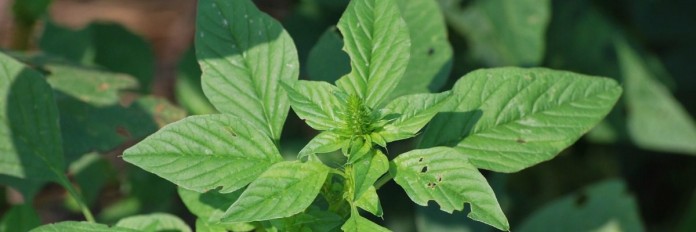
WEST LAFAYETTE, Ind. — Purdue University weed scientists have developed two time-lapse videos capturing the rapid growth of Palmer amaranth and the effect of pre-emergent herbicides used to control the aggressive and destructive weed.
And farmers have developed two words for the weed (that are family-friendly enough for our website): Invasive giant.
The videos were compiled from footage shot last year at the Purdue weed science research site in Cass County.
“After viewing these videos, the message we want to get across to producers is the utility of using a pre-emergent herbicide,” said Travis Legleiter, Purdue weed science program specialist.
Proof in pictures
The first video, available at https://www.youtube.com/watch?v=VDvh0hhHNEE, presents a side-by-side view of two soybean plots. One plot was treated with a pre-emergent residual herbicide and the other was untreated.
The video shows Palmer amaranth quickly growing to an unmanageable size and encroaching on the soybeans in the untreated field while the treated field remains mostly clear.
“This shows why using a pre-emergent herbicide is so important to get the weeds at their weakest point,” Legleiter said. “The control of post-emergent herbicides dramatically decreases once the Palmer amaranth plant is taller than 4 inches.”
Aggressive. And big
The second video, available at https://www.youtube.com/watch?v=9ZOhbmT7Djs, shows how quickly Palmer amaranth grows and spreads once it is established.
Watch the time-elapsed video here: (Story continues below video)
Used combines from across state lines can spread No. 1 weed.
“One thing we don’t talk about a lot is biomass,” Legleiter said. “Palmer amaranth plants get tall, but they also get wide, taking up a lot of light and crowding out other plants.”
Legleiter worked with Bill Johnson, professor of weed science, to produce the videos.
The team produced an earlier video, available at https://www.youtube.com/watch?v=wNgRvvnPQJ8, showing producers how to identify Palmer amaranth, which was first identified in Indiana in 2012.
“Identification is the first, and often critical, step in an intensive management program farmers need to have in place if they are dealing with Palmer amaranth,” Legleiter said. “The next step is to apply a pre-emergent residual herbicide as close to planting as possible.”
Legleiter said he and Johnson plan to expand their test plot and set up cameras in the field again this year.










